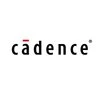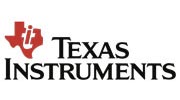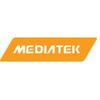
i
Cadence Design
Systems
Filter interviews by
Cadence Design Systems Engineer Interview Questions and Answers
Cadence Design Systems Engineer Interview Experiences
1 interview found
I applied via Referral
Interview Preparation Tips
They call it EDA ( Electronic design automation).
They expect people with good C knowledge, data structures, compiler knowledge.
Skills:
Top trending discussions






Interview questions from similar companies

I applied via Campus Placement and was interviewed in Dec 2016. There were 4 interview rounds.
Interview Questionnaire
1 Question
- Q1. Design 2 to 1 mux and project details
- Ans.
A 2 to 1 mux can be designed using logic gates or multiplexer ICs.
A 2 to 1 mux has 2 inputs and 1 output.
It selects one of the inputs based on the value of the select input.
The truth table for a 2 to 1 mux can be used to design the circuit.
Multiplexer ICs like 74HC153 can be used to implement the design.
The output of the mux can be connected to a logic gate or another mux for further processing.
Interview Preparation Tips
Experience: All are aptitude questions. Most of them are permutations and combinations questions.
Tips: Prepare aptitude well.
Duration: 1 hour
Total Questions: 25
Round: Technical Interview
Experience: They asked very simple questions. I was asked to design 1 serilizer 4 data lines to 1.They asked 1 aptitude question.
Tips: Prepare basic digital circuits such as mux, demux, decoder etc.
College Name: IIT Madras

I appeared for an interview before Jun 2016.
Interview Preparation Tips
Experience: Basic questions, testing normal knowledge
Total Questions: 50
Round: Technical Interview
Experience: 20 minutes, 5 questions ? Scheduling, real-time OS, and file system based questions ? Asked some in depth questions about file-handling in Linux ? C++ - IBM site tutorials, C-FAQ for C coding tutorials ? One puzzle, regarding number of rectangles on a chessboard, and some more typical questions asked in technical interviews
Round: HR Interview
Experience: Family and educational background ? Tell me about yourself ? Went a little in-depth into Linux. ? Main concern: will you join or not
Tips: Over all preparation in C, DSP course, OS and course in networking helps. ? Also, for HR interview, know about the company, PPT and website.

Interview Questionnaire
16 Questions
- Q1. Explain the difference between Moore and Mealy state models
- Q2. Draw the state diagram and the clocked D-flipflop circuit for a 0110 sequence detector
- Q3. What is parity and how is it used? Draw the circuit diagram for a parity checker
- Q4. Design a memory organization given the size and block units
- Ans.
Designing a memory organization based on size and block units.
Determine the size of the memory and the size of each block unit
Choose a suitable memory organization scheme such as direct mapping, associative mapping, or set-associative mapping
Implement the chosen scheme and test for efficiency and accuracy
- Q5. Draw the circuit diagram for a random number generator
- Ans.
A random number generator circuit diagram can be created using a noise source and an amplifier.
Use a noise source such as a Zener diode or a reverse-biased transistor
Amplify the noise signal using an amplifier circuit
Use a comparator to convert the analog signal to a digital signal
Add a clock circuit to control the output frequency
- Q6. What is a Schmitt trigger/inverter?
- Ans.
A Schmitt trigger/inverter is a circuit that converts a noisy input signal into a clean digital output signal.
It has two threshold voltage levels: a high threshold and a low threshold
The output of the circuit changes state only when the input voltage crosses one of the threshold levels
It is commonly used in digital circuits to clean up noisy signals and to provide hysteresis
Examples include debouncing switches, signal ...
- Q7. Arrange the inputs to AND gates so that power usage is optimized/delay is optimized
- Ans.
To optimize power usage/delay in AND gates, arrange inputs based on their capacitance and resistance.
Arrange inputs with lower capacitance and resistance closer to the gate
Inputs with higher capacitance and resistance should be placed farther away
Consider the layout of the circuit and the routing of the wires
Simulation tools can be used to determine optimal input arrangement
- Q8. Draw the CMOS circuit for a given logic equation and do the corresponding W/L sizing
- Ans.
Answering a question on drawing CMOS circuit and W/L sizing for a given logic equation.
Understand the logic equation and its truth table
Use CMOS inverter and NAND gates to implement the logic
Size the transistors based on their role in the circuit
Check the circuit for correct functionality
Examples: AND gate, OR gate, XOR gate
- Q9. Draw a circuit for a set of logic equations using PLA
- Ans.
A circuit for a set of logic equations using PLA
PLA stands for Programmable Logic Array
PLA is a type of digital circuit used to implement combinational logic circuits
The circuit consists of an AND array and an OR array
Inputs are fed into the AND array and the outputs are fed into the OR array
Example: A PLA circuit for a 2-input XOR gate would have 2 inputs, 2 AND gates, and 1 OR gate
- Q10. Draw and talk about a basic SRAM cell
- Q11. Given the delays for gates and wires, draw output waveforms for the given logic circuit
- Ans.
Draw output waveforms for a logic circuit given delays for gates and wires.
Identify the logic gates and their delays
Determine the propagation delay for each wire
Use the delays to calculate the output waveform
Draw the waveform using a timing diagram
- Q12. What is Min-Cut placement algorithm? Given some block sizes, use the algorithm to place them on a given chip area
- Q13. Given a clock waveform of frequency f, design a circuit to get an output of frequency f/3
- Ans.
Design a circuit to get an output of frequency f/3 from a clock waveform of frequency f.
Use a counter to divide the frequency by 3
Implement a flip-flop to toggle the output
Use logic gates to control the counter and flip-flop
- Q14. Explain a little about your M.Tech. project
- Ans.
My M.Tech. project was focused on developing a machine learning algorithm for predicting stock prices.
Used historical stock data to train the algorithm
Implemented various machine learning techniques such as regression and neural networks
Achieved an accuracy of 80% in predicting stock prices
Explored the impact of news articles on stock prices
- Q15. What do you know about Qualcomm?
- Ans.
Qualcomm is a multinational semiconductor and telecommunications equipment company.
Founded in 1985 in San Diego, California
Specializes in designing and manufacturing wireless telecommunications products and services
Known for their Snapdragon processors used in smartphones and other mobile devices
Also involved in developing 5G technology and Internet of Things (IoT) devices
Has partnerships with various companies includi...
- Q16. Have you ever worked in groups? What kind of work was it?
- Ans.
Yes, I have worked in groups on various projects.
I have worked in groups during my college projects.
I have also worked in groups in my previous job on a software development project.
In both cases, we had to collaborate and divide tasks among team members.
We had regular meetings to discuss progress and address any issues.
I found that working in a group allowed us to leverage each other's strengths and produce better res...
Interview Preparation Tips
Experience: The Quant and Programming sections were long but fairly easy; I pretty much sailed through them. However, the core EC section was really lengthy and not so easy, and also had negative marking. I was able to complete the first 2 sections completely, and around 11/20 questions in the core section.
The Quant section touched basic topics like probability, algebra and simple geometry. Programming questions were quite syntax-based, rather than algorithm-based. In the core section, the focus was on device physics and digital electronics, including combinational/sequential circuits and microprocessors.
Tips: 1. Practice Quantitative sections. A LOT. Speed is of the essence in these sections, because almost everyone is on the same level as you are where mathematics is concerned.
2. Know the basic syntax of C++, that is the most common language you're tested on in the Programming section. Also know simple data structures and complexity calculations.
3. The core section is the most important one, so make sure your knowledge is sound and practice solving digital circuits as fast as you can.
4. The EC section is generally quite lengthy, so quickly flip through the questions once and then figure out what questions you can do for sure, finish those and then start on the remaining ones. DO NOT STAY ON ONE QUESTION FOR TOO LONG, because you won't even be able to haphazardly guess on the other questions because of the negative marking.
Duration: 60 minutes
Total Questions: 50
Round: Technical Interview
Experience: I had only one round of technical interview. The interviewer was a person who'd worked at Qualcomm for around 5 years, as a Senior Engineer. The questions were not too tough, but challenging enough that you had to be quick at circuit evaluations. I wasn't able to solve all the questions completely, but talking aloud really helped, the interviewer himself would pass on hints or correct me sometimes if I went too far off on a tangent.
All in all, the interview lasted for about 45 minutes and was tiring but really fun if you like EC. For the first time, I realized that I actually knew electronics after studying it for 4 years! ;)
Tips: 1. Many people must have said this to you, but I'll say it again: Don't be too nervous. The questions are asked in such a way that you will definitely not be able to do all of them, so don't freak if you miss something here and there, they know it too!
2. Make sure you have the basics of logic gates, sequential design and digital VLSI circuits down pat when you're preparing for the interview. These are the main areas they are looking for in the VLSI Electronics interviews. Apart from these, a knowledge of Computer Architecture and basic VLSI CAD wouldnn't hurt!
3. I can't emphasize this enough: Talk out when thinking. It is very important for the interviewers to know what kind of technical logic you use when working out problems, and most often they start talking with you, which leads to an insightful discussion rather than a Q&A session.
4. Make sure your interest in the field also comes across; as far as I saw, they're looking for people who actually like EC and will be able to work hours together without getting bored of it (Well, not too much :P)
Round: HR Interview
Experience: The HR interview wasn't really an interview; it was more of a 15-minute discussion with an HR person. He was basically looking to see whather I would be able to fit into a team-oriented work environment and add something to it, that's all. Apart from that, there was mostly a discussion on the package breakdown, and the kind of work and teams we could be involved with in Qualcomm.
Tips: 1. Know something about Qualcomm, so that you're able to answer the first question they'll mostly ask.
2. This round is set to get to know you, so clear all your doubts and ask as many questions as you want.
3. Once again, try to express your interest in working in the field of electronics; if your passion shows, this round is pretty much cleared!
General Tips: 1. Be sure you're interested in EC before applying to Qualcomm for the VLSI profile.
2. For the test, speed is of the essence; practice solving different question sets in as less time as possible.
3. For the interview(s), don't be nervous, talk aloud, and have a sound technical base to build upon.
Skills: Digital Circuits, VLSI Technology, Low-Power Electronics, EC Device Physics, VLSI Circuit Design, Basic Programming
College Name: Indian Institute of Technology Kharagpur
Motivation: I've always been interested in Electronics, ever since I studied the 8085 Microprocessor in the 12th Grade. Even when I joined IITKGP, I changed my Department to Electronics after my first year, because that's what I wanted to study!
Circuit design is one of the most interesting and challenging fields in today's electronics field, and I would love to see what happens, and be a part of it. Especially since right now we're on the verge of a big change - we're close to moving away from silicon-based designs; what happens next?
Skills evaluated in this interview

I applied via Referral and was interviewed before Jul 2022. There were 3 interview rounds.

(1 Question)
- Q1. Questions about Thermal basics. JD also about melting point temperatures
(1 Question)
- Q1. Salary negotiations and joining date details

I applied via Referral and was interviewed before Jan 2021. There were 5 interview rounds.
Interview Questionnaire
2 Questions
- Q1. Basic data structures questions from bit manipulation, trees, arrays, string
- Q2. Questions related to previous company work.
Interview Preparation Tips

Interview Questionnaire
1 Question
- Q1. I was interviewed for 4G/5G modem system. Topics that generally comes in these types of interview: Communication systems basics in detail, modulation techniques in detail, wireless channel in detail like m...

I applied via Campus Placement and was interviewed in Jul 2021. There were 2 interview rounds.
Basic Aptitude question along with questions from objective questions from DS, OS.
(1 Question)
- Q1. Two Easy to Medium leetcode question. Focus was on space and time complexity. Along with it, lot's of questions on pointers, threading, linked list, etc. Questions on system calls as well were asked.
Interview Preparation Tips

Senior Engineer Interview Questions & Answers
Advanced Micro Devicesposted on 27 Jul 2024
(2 Questions)
- Q1. Last Project details
- Ans.
Designed and implemented a cloud-based data analytics platform for real-time monitoring of network performance.
Led a team of 5 engineers in developing the platform using AWS services such as EC2, S3, and Lambda functions
Integrated data visualization tools like Tableau for generating reports and dashboards
Implemented machine learning algorithms for predictive analysis of network outages
Collaborated with stakeholders to ...
- Q2. SV -UVM questions

(2 Questions)
- Q1. Brief about resume
- Q2. Project related questions
Cadence Design Systems Interview FAQs
Tell us how to improve this page.
Cadence Design Systems Interviews By Designations
- Cadence Design Systems Software Developer Interview Questions
- Cadence Design Systems Design Engineer Interview Questions
- Cadence Design Systems Intern Interview Questions
- Cadence Design Systems Softwaretest Engineer Interview Questions
- Cadence Design Systems Software Engineer Interview Questions
- Cadence Design Systems Software Engineer Intern Interview Questions
- Cadence Design Systems Test Engineer Interview Questions
- Cadence Design Systems Senior Software Engineer Interview Questions
- Show more
Interview Questions for Popular Designations
Engineer Interview Questions from Similar Companies
|
Lead Software Engineer
159
salaries
| ₹25.2 L/yr - ₹43.4 L/yr |
|
Principal Software Engineer
118
salaries
| ₹34 L/yr - ₹60 L/yr |
|
Software Engineer2
114
salaries
| ₹16.6 L/yr - ₹29 L/yr |
|
Software Engineer
91
salaries
| ₹14.1 L/yr - ₹25.7 L/yr |
|
Lead Engineer
71
salaries
| ₹16.5 L/yr - ₹44.9 L/yr |

Synopsys

Qualcomm

Intel

Molex
- Home >
- Interviews >
- Cadence Design Systems Interview Questions










